Sign up for the Family Tree Newsletter Plus, you’ll receive our 10 Essential Genealogy Research Forms PDF as a special thank you!
Get Your Free Genealogy Forms
"*" indicates required fields
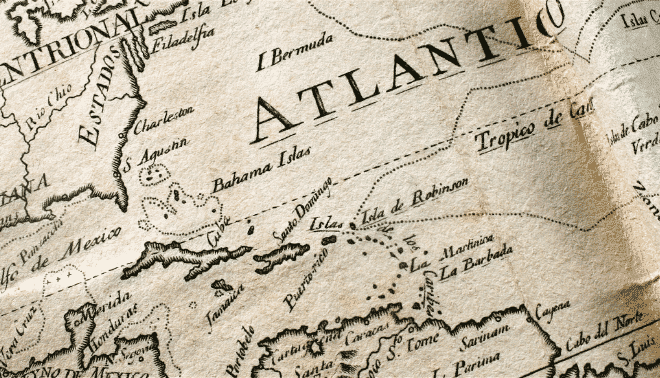
Setting sail in search of your Caribbean ancestry can present challenges daunting even to Johnny Depp’s cinematic Capt. Jack Sparrow. Nathan Zipfel, coordinator of the Caribbean Gen Web Project, an essential starting point for your quest, warns the Caribbean is the most difficult of any genealogical area: “Your search may take you to Scotland, France, the Netherlands, Ireland, the United States or from island to island, following the migration of an ancestor,” he says.
“Records of the indigenous Caribs and Arawaks are nearly nonexistent, which makes a complete lineage impossible for many descendants. Records have been destroyed by hurricanes, volcanic eruptions, slave rebellions, fire and frequently changing governments.”
While challenging, Caribbean genealogy research is not impossible. Thanks to the Family History Library (FHL) and others, there are resources available for genealogists to trace their ancestors. Read on for more information about what records you can find, as well as island-specific histories, tips and resources that are organized to match the Caribbean GenWeb categories.
Jump to:
Anguilla
Antigua and Barbuda
Bahamas
Barbados
Bermuda
British Virgin Islands
Cayman Islands
Cuba
Dominica
Dominican Republic
Grenada
Guadaloupe
Haiti
Jamaica
Martinique
Montserrat
Netherlands Antilles
Puerto Rico
St. Kitts and Nevis
St. Lucia
St. Vincent and the Grenadines
Trinidad and Tobago
Turks and Caicos Islands
US Virgin Islands
How can I trace my Caribbean ancestry?
The Family History Library has microfilmed a wealth of Caribbean records, bringing your island ancestors as close as your local branch Family History Center (FHC). Records from the Bahamas, for example, include land conveyances, appraisals and indexes to wills covering 1700 to 1852. In the British Virgin Islands, most St. Kitts, Nevis and Anguilla vital records from 1859 to the 1930s are on film. The FHL has 71 reels of census records from what’s now the US Virgin Islands, covering most areas from 1841 to 1911. There’s even a census of Barbados dating all the way back to 1715. This is just a tiny sampling, of course; check the FHL’s online catalog, as well as the guide at www.candoo.com/genresources/microfilms.htm. You can borrow these records through an FHC.
You’ll encounter a variety of resources as you research, which are listed here.
Vital Records
Depending on the island where your ancestors landed, you might not find the vital records you’re used to in US research. In former British colonies, birth, marriage and death records are generally at a registrar general’s office.
Court Records
Don’t be shy about poking into your Caribbean ancestor’s “criminal” past, Zipfel says. He notes the smallest transgressions could result in a criminal record, such as a black woman wearing a silk slip or a slave or servant whistling in public.
Church Records
These can be particularly valuable in the Caribbean, where missionaries arrived as early as 1736. In general, Danish colonies had Lutheran churches; British had Anglican churches (as well as “nonconformists,” typically Methodists); Dutch had Dutch Reformed churches; and French and Spanish had Catholic churches. Your African or native ancestors may have joined a missionary church such as Moravian or Baptist, although Catholics also baptized large numbers of slaves. The FHL has microfilmed many Caribbean church records. If, for example, your ancestors lived in Curaçao, you can look for them in Dutch Reformed, Lutheran and Catholic church records ranging from 1714 to 1842, as well as more-recent Catholic records dating from 1902 to 1962.
Plantation Records
Often overlooked, “stock books” Caribbean plantation owners kept list slaves and indentured servants. Not all forced laborers in the West Indies were African, Zipfel points out: Irish prisoners worked on plantations, and the Deficiency Act required plantation owners to have one white worker for every 10 blacks, to reduce the islands’ ratio of blacks to whites. Local island libraries and archives are the best places to seek old stock books.
Repositories
Many islands have excellent archives or history museums. The University of the West Indies, which serves 16 English-speaking Caribbean nations, also has libraries on its three campuses: Barbados, Jamaica and Trinidad. Don’t overlook stateside libraries with strong Caribbean collections, too, including the University of Miami Library, the Florida International University Library and Latin American and Caribbean Information Center.
International Records
You often can overcome brick walls with records in an island’s colonizing country: The Danish Demographic Database, for instance, has census records from St. Croix. Almost half the Dutch Antilles civil registration records from 1828 to 1950 are on the Dutch genealogy site Genlias.
Although subscription sites such as Ancestry.com may not focus on the Caribbean, sometimes records for an island’s colonizing country will pop up. Ancestry.uk, for example, has 1834 Barbados slave registers containing names of 100,000 slaves and their owners; other years and islands are in the works.
Other researchers: Volunteers on many Caribbean GenWeb sites (see listings) have posted a variety of data from their islands. The Caribbean-L mailing list on Roots Web has nearly a decade’s worth of queries and tips, and many islands have their own e-mail lists. The Caribbean Genealogy Research page is an exhaustive compilation of archives and other resources. Also, don’t miss Jim Lynch’s Caribbean Surname Index. If you have African Caribbean roots, the Caribbean Research Forum at AfriGeneas is packed with information.
If your ancestor died in Aruba or other islands of the Netherlands Antilles, he maybe listed in microfilmed civil registration records.
It helps to have some knowledge of the language of the Europeans who claimed your ancestral island — Spanish for Cuba, French for Guadalupe, or French and Dutch for St. Martin (St. Maarten). Colonial powers passed many islands back and forth, and colonists came from the mother country and from neighboring islands.
For your research convenience, the following island-specific histories, tips and resources are organized to match the Caribbean GenWeb categories.
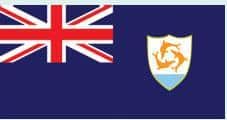
Anguilla
Part of the Leeward Islands British Dependency, Anguilla is east of the British Virgin Islands and was first settled about 1650. The British recombined islands in the area several times; in 1871, for instance, Anguilla and St. Kitts were united in a single jurisdiction, with neighboring Nevis added soon after.
Anguilla Library Service
Box 60, The Valley, Anguilla, (264) 497-2441
Registrar of Births, Deaths and Marriages
The Court House Building
Box 60, The Valley, Anguilla, (264) 497-2377
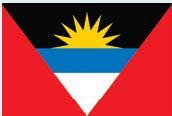
Antigua and Barbuda
Antigua began its modern era in 1684 with the arrival of Sir Christopher Codrington and large-scale sugar cultivation. Most modern Antiguans are descendants of African slaves who labored in the sugar cane fields. In 1967, with Barbuda as a dependency, Antigua became an associated state of the British Commonwealth; it achieved independence in 1981. The national archives has vital records starting in 1856 (as does the registrar general), slave registers from 1817 to 1831, and newspapers.
Antigua and Barbuda History and Culture
Antigua and Barbuda National Archives
Rappaport Center, Factory Road, St. Johns, Antigua, (268) 462-394
Antigua and Barbuda Registrar General High Court
High Street, St. John’s, Antigua, (268) 462-3929
Museum of Antigua and Barbuda/Antigua Historical and Archaeological Society
Box 103, Long St., St. Johns, Antigua, (268) 462-1469
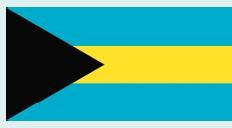
Bahamas
The Arawak Indians were already in the Bahamas when Columbus landed there in 1492. Permanent European settlers arrived in 1647 after Capt. William Sayle and 70 others from Bermuda landed on the island of Eleuthera. Slavery played a big role in populating the Bahamas, as did the arrival of American loyalists from 1778 to 1783.
Land records can help you find Bahamas ancestors; the national archives has a guide <www.bahamasnationalarchives.bs/genealogy/family_history.htm> (click Land Grants). Holdings also include Anglican church records (1733 to 1992), censuses (1901 to 1980), slave registers (1821 to 1834), cemetery records (1897 to 1963) and wills (1703 to 1968). The registrar general has birth and death records starting in 1850 and marriage records starting in 1799. Don’t miss the indexes accessible through the country’s GenWeb page (click Records), including pioneer settlers in 1671 and wills from 1722 to 1917.
AfriGeneas: African Ancestry in the Bahamas
Bibliography of Bahamian Genealogy
Bahamas Department of Archives
Box SS-6341, Nassau, Bahamas, (242) 393-2175
College of the Bahamas Library
Oakes Field, Box N1645, Nassau, Bahamas, (242) 323-7930
Nassau Public Library
Box N3210, Nassau, Bahamas, (242) 393-5379
Registrar General
Box N532, Nassau, Bahamas, (242) 322-3316
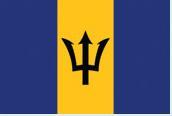
Barbados
Initially a tobacco and indigo trading colony, Barbados had one of the largest white populations of the English Caribbean colonies. It served as a jumping-off point for migration to other islands and to America. A huge sugar industry eventually brought as many as 400,000 slaves.
The Centre for Barbados Studies in History and Genealogy, which doubles as the island’s GenWeb site, offers rich online resources (click Public), including lists of 17th-century inhabitants, 1680 censuses, land holdings from 1630 to 1644, an index to servants, a list of 1672 dragoons and “Eminent Planters 1673.” At the national archives, find baptism, marriage, burial and land records; wills; and newspapers.
1638 List of Inhabitants of Barbados
Barbados Department of Archives Lazaretto Building
Black Rock, St. James, (246) 425-1380 or (246) 425-1381
Barbados Museum and Historical Society/Shilstone Library
St. Ann’s Gate, Garrison, St. Michael, Barbados, (246) 427-0201
National Library Service
Coleridge Street, Bridgetown, St. Michael, Barbados, (246) 426-398
Registration Department
Supreme Court Complex, Whitepark Road, St. Michael
Barbados, W.I., (246) 426-3461
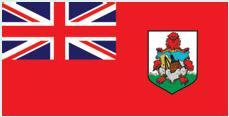
Bermuda
Technically not in the Caribbean at all, this isolated island chain lies in the Atlantic 1,000 miles north of the Lesser Antilles. Although Spain discovered it in 1503, Bermuda became an English colony in 1612. With a House of Assembly founded in 1620, Bermuda is the oldest British island colony and remains a self-governing British dependent territory. Besides English and Scottish colonists and African slaves, Portuguese arrived in Bermuda beginning in the 1850s from the islands of the Azores and Madeira.
Bermudian Genealogy GenWeb is packed with helpful resources, including dozens of early wills, surname studies, 1696 Association Oath Rolls, maps, parishes, ships and passenger lists. Birth and marriage records at the registry general start in 1866; death records start in 1865.
Bermuda Archives
30 Parliament St., Hamilton HM 12, Bermuda, (441) 297-7737
Bermuda National Library and Historical Society Museum
13 Queen St., Par-la-Ville Park, Hamilton HM 11, Bermuda
Library: (441) 295-3104, Museum: (441)295-2487
Registry General Ministry of Labor and Home Affairs
Ministry of Labor and Home Affairs, Government Administration Building, 30 Parliament St., Hamilton, 5-24, Bermuda, (809) 295-5151
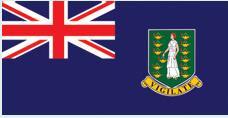
British Virgin Islands
The Dutch settled this group of 36 islands in 1648; England acquired them in 1666. They remain a British dependent territory.
Library Services Department
Flemming Street, Road Town, Tortola, British Virgin Islands, (284) 494-3428
Registrar General
Box 418, Road Town, Tortola, British Virgin Islands, (284) 494-3492
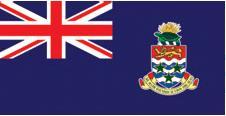
Cayman Islands
In 1503, Columbus dubbed the Caymans “Las Tortugas” for the many turtles he saw there. Spain ceded these islands to England in 1670. Settlement began in 1734, with most people arriving from Jamaica, of which the Caymans became a dependency. After Jamaican independence in 1962, the Caymans became a British Crown Colony.
Cayman Islands National Archive
Government Administration Building, George Town, Grand Cayman, Cayman Islands, (345) 949-9809
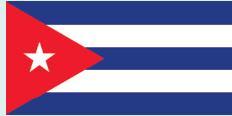
Cuba
Cuba’s rich and varied history includes Columbus’ arrival in 1492, British pirates’ capture of Havana in 1762, US victory in the Spanish-American War and the rise of Fidel Castro. It’s all captured in-depth at <www.historyofcuba.com/history/time>.
Cuban roots researchers will want to be familiar with Hispanic genealogy basics. You’l find a wealth of resources and tips at the Cuban Genealogy Center GenWeb site, including archives of Cuba’s founding families, military records, cemetery listings, church and synagogue contacts, indexes to key historical and genealogical works, 5,000 passenger-list entries, and nearly 70,000 transcribed names of veterans of the 1895-to-1898 war of independence.
Researching in Cuba itself, however, remains a challenge due to US restrictions on travel and sending funds there. You may be able to get parish records by writing the priest in Cuba; you’l improve your odds by also making a donation to the parish via the Vatican Embassy, 3339 Massachusetts Ave. NW, Washington, DC 20008.
National Archives (Archivo National de Cuba)
Calle Compostela No. 906, esq. San Isidro Habana Vieja, 10100 La Habana, (537) 862-9436
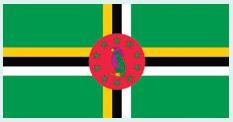
Dominica
Mountainous Dominica, first settled by Arawaks about 1000 BC and then by Carib Indians in 900 AD, was spotted and named by Columbus in 1493. No European nation claimed it until 1627, then the French and English contended over the island until Britain finally got it in 1763. After a long period of black activism, Dominica gained independence in 1978. The general registrar’s birth, marriage and death records start in 1861.
National Documentation Centre Library and Information Services
Government Headquarters, Kennedy Avenue, Roseau, Dominica, (767) 448-2401, ext. 3409, library@tod.dm
Public Library
Victoria Street, Roseau, Dominica, (767) 448-2401, ext. 3341, publiclibrary@cwdom.dm
Registrar General
Bay Front, Roseau, Dominica, (767) 448-2401
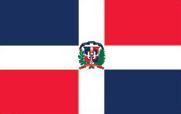
Dominican Republic
Another place where Hispanic genealogy knowledge is a must, the Dominican Republic shares the island of Hispaniola with Haiti. Although Columbus made other stops first, it was Hispaniola where he planted the Spanish flag and established a tiny settlement (and lost his flagship, the Santa Maria).
The French also made inroads on the island with some help from pirates, and claimed the western third in 1697 as St. Domingue, which later became Haiti. After Haitian independence, the island’s eastern part briefly returned to Spanish rule. Haiti conquered and occupied it until 1844, when the Dominican Republic was established.
History of the Dominican Republic
Dominican Genealogical Institute (Instituto Dominicano de Genealogia)
Box 3350, Calle Mercedes #204, Santo Domingo, Republica Dominica, (809) 687-3992
National Archive (Archivo General de la Nacion)
Avenida George Washington Esquina Pte. Vicini Burgos, Santo Domingo, Republica Dominica, (809) 221-4141
National Library (Biblioteca Nacional)
César Nicolás Penson 91, Plaza de la Cultura, Santo Domingo, Republica Dominica
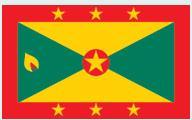
Grenada
Spanish settlers skipped Grenada — yet another Columbus find — for fear of its fierce Carib natives. First the French, in 1652, and ultimately the British, in 1762, colonized the island, which became independent in 1974. The registrar general’s birth, marriage and death records start in 1866.
Public Library/National Archives
2 Carenage, St. George’s, Grenada, (473) 440-2506, edon2000@yahoo.com
Registrar General
Church Street, St. George’s, Grenada, (473) 440-2030
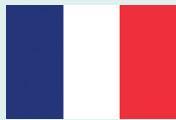
Guadaloupe
The French Compagnie des Îles de l’Amérique began settling Guadeloupe in 1635. The Kingdom of France annexed the island in 1674, but it went through several periods of British control until 1815, as those two nations’ European conflicts extended to the New World. Today Guadeloupe is an overseas department of France. A basic knowledge of French genealogy — and the language — will be handy when exploring your roots here.
Departmental Archives (Département de la Guadeloupe, Archives Départementales)
B.P. 74, 97102 Basse-Terre, Cedex, Guadeloupe, +590 (81) 13 02
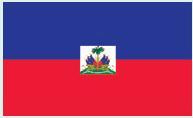
Haiti
Haiti’s early history is inextricably linked with that of the Dominican Republic, with which it shares the island of Hispaniola. As a French colony beginning in 1697, St. Domingue produced more sugar and coffee than all Britain’s West Indies colonies combined. The plantations required an equally vast number of African slaves — estimated at nearly 800,000 — and from 1783 to 1791, the colony accounted for one-third of the entire Atlantic slave trade. St. Domingue also had the Caribbean’s largest and wealthiest free black population, les gens de couleur.
A slave revolt broke out in 1791, and after defeating an expedition led by Napoleon’s brother-in-law, the former slaves established the Republic of Haiti — the world’s oldest black republic and the second-oldest republic in the New World — in 1797. François-Dominique Toussaint L’ouverture was its first leader. Your research will benefit from a working knowledge of French and the nation’s French heritage (most Haitians speak French Creole). Search the Association de Généalogie de Haiti <www.agh.qc.ca/indexen.html> database of 480,000 names from civil registers, dating from 1793.
National Archives (Archives Nationales d’Haiti)
22 Angle Rues Borgella et Geffrard, Boite Postale 1299, Port-au-Prince, Haiti, +509 222-8566
National Library (Bibtiothèque Nationale d’Haiti)
193 Rue du Centre, Port-au-Prince, Haiti, +509 222-0236
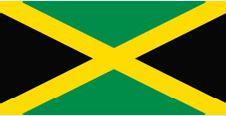
Jamaica
Although Spain occupied Jamaica until 1655, it never considered the colony important. Under subsequent British rule, however, sugar plantations imported slaves in great numbers and Jamaica became one of the “jewels in the British crown.” Following emancipation in 1838, a peasant class developed and pressure grew for independence, which came in 1962. The Jamaica Genealogy Page GenWeb site offers a wealth of resources forgetting started, including tips on finding FHL records and listings of 1837 estates, free Jamaicans from 1754 to 1776, loyalists who fled to Jamaica from South Carolina, early wills and more.
If you go there, research the indexed vital records at the registrar general’s office instead of the national archives’ unindexed records. Do stop at the archives for baptism, marriage and burial records (1664 to 1871); slave-return registers (1817 to 1832); books of gifts, deeds and manumissions (1732 to 1832); wills; deeds; and land grants. Vital, baptism and burial records at the registrar general’s office date from 1669 to 1880.
African-Caribbean Institute of Jamaica
12 Ocean Blvd., Kingston 6, Jamaica, (809) 922-4793
Jamaica Archives
Spanish Town, St. Catherine, Jamaica, (876) 984-5001
Jamaica Historical Society
Richmond Park Great House, 58 Half Way Tree Road, Kingston 10, Jamaica
National Library of Jamaica
12 East St., Kingston 6, (809) 922-0620
Registrar General
Vital Records Information, Twickenham Park, Spanish Town, St. Catherine, Jamaica, (876) 984-3041
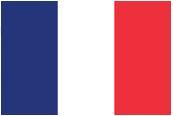
Martinique
France’s leading colony in the 17th and 18th centuries, Martinique boomed with the sugar industry. It imported slaves, and later, 10,000 workers from India. France and Britain exchanged Martinique for a time; today it’s a French overseas department.
Departmental Archives (Département de la Martinique, Archives Départementales)
Dominique Taffin, Boite Postale 679, 97263 Fort-de-France, Cedex, Martinique, +596 (596) 554-343
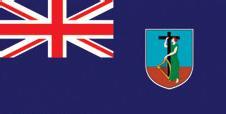
Montserrat
Most recently famous for its volcanic eruptions, which have destroyed some of its records (the library has several thousand rescued documents), Montserrat was a 17th-century refuge for the Irish Oliver Cromwell exiled. The Irish in turn began importing slaves, who staged a St. Patrick’s Day rebellion in 1768. After a brief interim of French rule, Montserrat has remained a British colony. The local registrar general’s vital records start in 1862; the UK national archives has early wills.
Condensed History of Montserrat
Montserrat Public Library
Government Headquarters, BBC Building, Brades, Montserrat, (664) 491-4706, publiclibrary@candw.ag
Registrar General
Box 22, Plymouth, Montserrat, (664) 491-2129
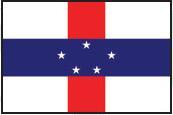
Netherlands Antilles
Six islands — Aruba, St. Eustatius, Curaçao, Bonaire, Saba and St. Maarten — make up the Dutch Antilles; Aruba seceded in 1986, but the rest are overseas territories of the Netherlands. They lie in two groupings, about 550 miles apart, with the “ABC” islands of Aruba, Bonaire and Curaçao off the coast of Venezuela and the rest east of Puerto Rico.
The FHL has a range of microfilmed records of the Netherlands Antilles; see a list at <rootsweb.com/-antwgw/film.html>. The free Dutch genealogy site Genlias <www.genlias.nl> contains some 47,000 records from here, including complete records for St. Eustatius, St. Maarten and Bonaire, plus some from Aruba and Saba. The remainder, as well as records for Curacao, are in the works. Records in Aruba’s own national archives range from about 1833 to 1974.
National Archive (Nationaal Archief)
Scharlooweg 77, Willemstad, Curacao, Nederlandse Antillen, (599-9) 461-4866
National Historic Archives of Aruba
Steenweg 4 Oranjestad, Aruba, (297) 834880
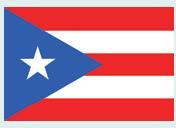
Puerto Rico
US and Hispanic genealogy meet in Puerto Rico, whose records reflect its changing history. Prior to 1885, churches kept vital records, then the demographic registries took over. Keep in mind, too, that the United States census has counted Puerto Rico since 1910. Both the Puerto Rico Gen Web site and Searching for Our Roots <rootsweb.com/-prsanjua> are packed with getting-started tips and valuable databases — including, at the latter, a partial 1910 census transcription.
Division of Health
Demographic Registry, Box 11854, Femandex Juncos Station, San Juan, Puerto Rico 00910, (787) 728-7980
Puerto Rico General Archive (Archive General de Puerto Rico)
Institute de Cukura, Box 9024184, San Juan, Puerto Rico 00902, (787) 722-2113
Regional Library of Caribbean and Latin-American Studies (Biblioteca Regional del Caribe y de Estudios Latinoamericanos)
Box 21927, San Juan, Puerto Rico 00931, (787) 764-0000
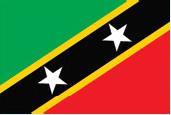
St. Kitts and Nevis
In 1623, St. Christopher (St. Kitts) became the first British territory in the West Indies. The French soon followed, and die nations briefly shared the colony. Irish and Scottish indentured servants arrived to work in sugar plantations, followed by African slaves. Now officially known as the Federation of St. Christopher and Nevis, it became independent in 1983. National archives holdings include marriage bonds and registers starting in 1771, death registers starting in 1880, Triennial Return of Slaves (1817 to 1834) and deed books. Vital records at the registrar general start in 1859. Also see Anguilla (page 60), which was once united with St Kitts and Nevis.
National Archives
Government Headquarters, Church Street, Box 186, Basseterre, St Kitts, (869) 465-2521
Nevis Library and Archives
Nevis Historical and Conservation Society, Box 563, Charlestown, Nevis, (869) 469-0408
Registrar General
Box 236, Basseterre, St. Kitts, (869) 465-5251
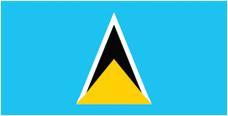
St. Lucia
The French were the first Europeans to overcome native opposition and settle St. Lucia, in 1660. But in the 18th and early 19th centuries, the island bounced between France and Britain 14 times, finally winding up British in 1815. It achieved independence in 1979.
National Archives
Box 3060, Clarke Street, Vigie, Castries, St. Lucia, (758) 452-1654
Registrar to the Supreme Court
Panier St., Castries, St. Lucia, (758) 452-1257
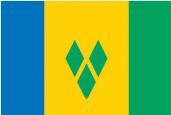
St. Vincent and the Grenadines
Shipwrecked African slaves first settled this 32-island group, then both Britain and France claimed it. The British prevailed, only to confront a vigorous native uprising and, in 1812, a devastating volcanic eruption of La Soufrière. Slaves largely populated St. Vincent until emancipation in 1833, when indentured workers from Portugal and the East Indies were the biggest group. The colony became independent in 1979. Registrar general vital records start in 1874.
St. Vincent and the Grenadines Archives
Cotton Ginnery Compound, Frenches, Kingstown, St. Vincent, (784) 456-1689, document@caribsurf.com
Kingstown Public Library
Lower Middle Street, Kingstown, St. Vincent, (784) 457-2022
Registrar General
Government Buildings, Kingstown, St. Vincent, (784) 457-1424
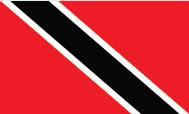
Trinidad and Tobago
Fledgling Spanish settlements begun on Trinidad in 1532 were transformed in 1783 when the Cedula of Population allowed any Catholic to settle there. The influx of French Catholics soon made the colony Spanish in name only. Then came the British, who captured Trinidad without a shot and formalized the ownership in 1802. The British claimed neighboring Tobago in 1608, but it changed hands repeatedly among Britain, France and the Netherlands, until England finally won out in 1763. The two islands united in 1889 and became a republic in 1976.
FHL pickings are slim, as Trinidad has been reluctant to allow microfilming, but the excellent GenWeb site will get you started on alternatives. At the Registrar General’s office, vital records start in 1848 for Trinidad and 1868 for Tobago.
National Archives
105 St. Vincent St., Box 763, Port-of-Spain, Trinidad, (868) 625-2689
National Heritage Library
8 Knox St., Port-of-Spain, Trinidad, (868) 623-6124, heritage@trinidad.net
Registrar General (Tobago)
Jerningham Street, Scarborough, Tobago, (868) 639-3210
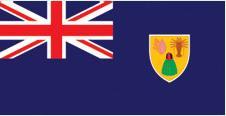
Turks and Caicos
Settlers were slow to inhabit these islands after Columbus spotted them during his first voyage. Much of the population descends from 168 Africans who survived the wreck of the Trouvadore slave ship in 1841. Salt was this British colony’s economic mainstay for 300 years. In 1870, a flag maker in England mistook a pile of salt for an igloo, and the symbol remained on the islands’ flag until its first self-elected government in 1976. The national museum has some microfilmed records starting in 1760; the registrar general has vital records starting in 1863.
Registrar General
Front Street, Grand Turk, (649) 946-2800
Turks and Caicos National Museum
Box 188, Front Street, Grand Turk, (649) 946-2160
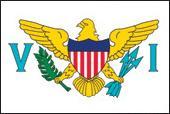
US Virgin Islands
These islands, which encompass St. Thomas, St. Croix and St. John, were long the Danish West Indies. Most pre-1917 records are in the Danish national archives (and on FHL microfilm); the Danish Demographic Database has transcribed St. Croix census records. Denmark sold the islands to the United States in 1917, and they’re enumerated in the 1920 and later censuses.
Danish West Indies History
Department of Health Bureau of Vital Records, Charlotte Amalie, St. Thomas, VI 00810
Director of Libraries and Museums
Department of Conservation and Cultural Affairs, Government of the Virgin Islands, Box 599, St. Thomas, VI 00802
Landsarkivet for Sjaelland (State Archive of Sealand, Denmark)
Jagtvejio, DK-2200 Kobenhavn N, Danmark
Once you’ve unearthed some treasures about your Caribbean ancestry, of course you’ll want to go research in person. Be sure to tell your friends it’s a genealogy trip — almost like work! — not a vacation. And remember to pack sunscreen.
From the January 2008 Family Tree Magazine
ADVERTISEMENT

